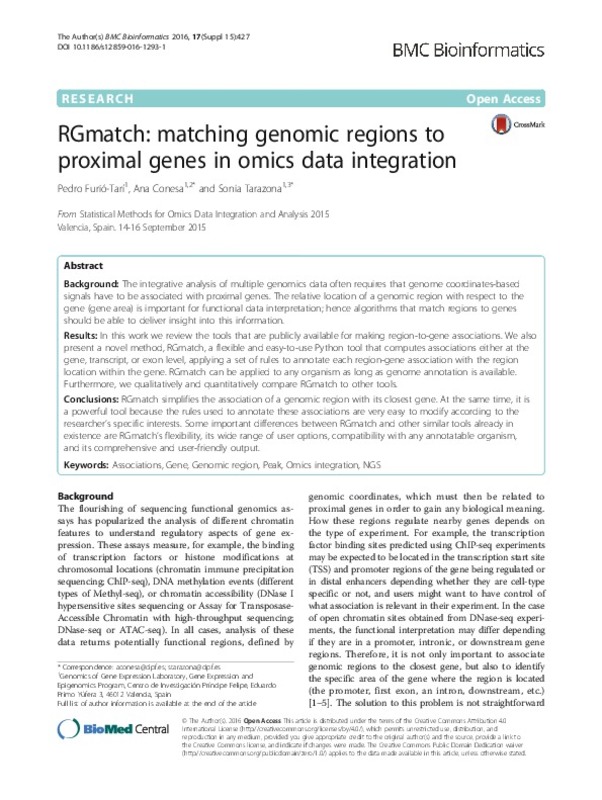JavaScript is disabled for your browser. Some features of this site may not work without it.
Buscar en RiuNet
Listar
Mi cuenta
Estadísticas
Ayuda RiuNet
Admin. UPV
RGmatch: matching genomic regions to proximal genes in omics data integration
Mostrar el registro completo del ítem
Furió Tarí, P.; Conesa, A.; Tarazona Campos, S. (2016). RGmatch: matching genomic regions to proximal genes in omics data integration. BMC Bioinformatics. 17((Suppl 15)). https://doi.org/10.1186/s12859-016-1293-1
Por favor, use este identificador para citar o enlazar este ítem: http://hdl.handle.net/10251/80136
Ficheros en el ítem
Metadatos del ítem
| Título: | RGmatch: matching genomic regions to proximal genes in omics data integration | |
| Autor: | Furió Tarí, Pedro Conesa, Ana | |
| Entidad UPV: |
|
|
| Fecha difusión: |
|
|
| Resumen: |
[EN] Background: The integrative analysis of multiple genomics data often requires that genome coordinates-based
signals have to be associated with proximal genes. The relative location of a genomic region with respect ...[+]
|
|
| Palabras clave: |
|
|
| Derechos de uso: | Reconocimiento (by) | |
| Fuente: |
|
|
| DOI: |
|
|
| Editorial: |
|
|
| Versión del editor: | http://dx.doi.org/10.1186/s12859-016-1293-1 | |
| Código del Proyecto: |
|
|
| Descripción: |
|
|
| Agradecimientos: |
The research leading to these results has received funding from the European Union Seventh Framework Programme FP7/2007-2013 under the grant agreement 306000 and the MINECO (Economy and Competitiveness Ministry) BIO2012-40244 ...[+]
|
|
| Tipo: |
|









